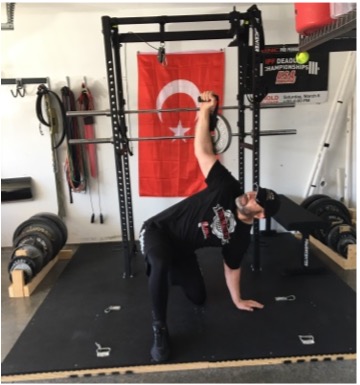
In this blog, former strength and conditioning coach Bryan Dermody shows how to incorporate exercises that will improve your mobility and stability to make you an overall better athlete.
Layering is a concept that I have used for many years, particularly as it applies to corrective exercise. However, the concept can be applied to any type of training with success.
To understand how to apply the concept of “layering” to corrective exercise, we should first review a concept called the “joint-by-joint” approach to training. In its simplest terms the joint-by-joint approach to training acknowledges that the human body is made up of a “stack” of joints, each alternating in primary need between mobility and stability as follows:
Upper Neck (mobility)
I
Middle and Lower Neck (stability)
I
Gleno-Humeral (mobility)
I
Scapulo-Thoracic (stability)
I
Thoracic Spine (mobility)
I
Lumbar Spine (stability)
I
Hips (mobility)
I
Knees (stability)
I
Ankle (mobility)
I
Feet (stability)
I
Toes (mobility)
A traditional approach to addressing the need of each joint uses isolation exercises that each address only one joint.
An example of this would be a standing external rotation at 90 degrees with a band or dumbbell in order to address scapula-thoracic stability. As the name implies, “layering” involves the integration or “layering” of several of these joint emphases in one movement. Here are some examples:
Glute-Bridge Pull-Over: knee stability, gleno-humeral mobility, scapula-thoracic stability


Half-Kneeling KB Windmill: gleno-humeral mobility, scapulo-thoracic stability, thoracic spine mobility, lumbar spine stability, hip mobility


OH Press + March: gleno-humeral mobility, scapulo-thoracic stability, thoracic spine mobility, lumbar spine stability, hip mobility, nee stability (*a band can also be added to the in-step)



Side-Bridge Clamshell + External Rotation: scapulo-thoracic stability, lumbar spine stability, knee stability


SL RDL + Pallof Press: scapulo-thoracic stability, lumbar spine stability, hip mobility, knee stability


As you can see, although the above examples are often used as corrective exercise, they can easily be used as the primary training movements in a workout. Using them as such is simply a matter of manipulating the volume and intensity. Have fun with this and be creative! For more ideas on how to use this concept check out @squat_university and @vernongriffith4 on Instagram.









